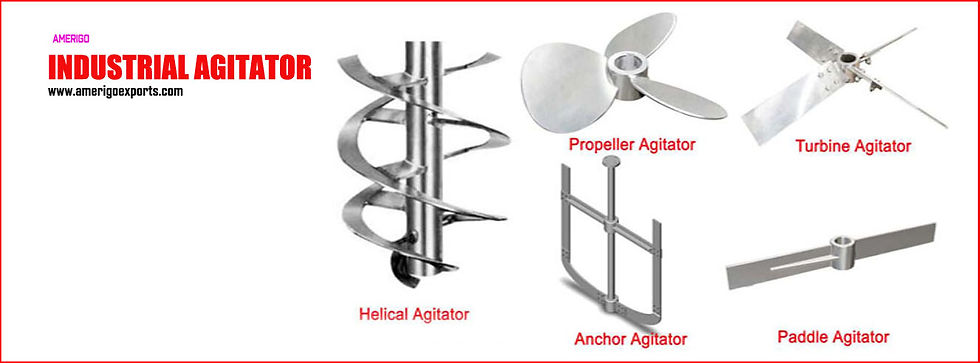Explore how Pulsation Dampeners operates
- Amerigo Exports
- May 21, 2024
- 3 min read
Manufacturers of FOX PULSATION DAMPENERS. The Pulsation dampeners, also known as pulsation dampers or surge suppressors, are devices used to minimize pressure fluctuations and pulsations in fluid systems, particularly in reciprocating pumps and other types of pulsating flow systems. Here is an overview of how pulsation dampeners operate:
Principle of Operation
Pulsation dampeners work based on the principles of absorbing and dissipating the energy of the pulsating fluid, smoothing out the flow, and reducing pressure spikes. The main components of a typical pulsation dampener include a pressure vessel, a flexible bladder or diaphragm, and a pre-charge of gas (usually nitrogen).
Components and Function
Pressure Vessel: This is the outer shell that contains the fluid and the gas. It is usually made of metal or composite materials to withstand high pressures.
Bladder/Diaphragm: This is a flexible membrane inside the pressure vessel that separates the gas from the fluid. It expands and contracts in response to the fluid pressure changes.
Gas Pre-Charge: The gas (often nitrogen) is pre-charged into the vessel at a pressure slightly below the system's operating pressure. This gas acts as a cushion to absorb pulsations.
How It Works
Absorbing Pulsations: When the fluid pressure increases due to a pulsation, the bladder or diaphragm compresses the gas in the dampener. This compression absorbs the energy of the pressure spike, reducing the pulsation in the fluid.
Dissipating Energy: As the fluid pressure decreases, the gas expands, pushing the bladder or diaphragm back to its original position. This expansion helps to smooth out the flow, maintaining a more constant pressure in the system.
Smoothing Flow: The continuous action of the bladder or diaphragm compressing and expanding in response to fluid pulsations results in a smoother, more steady flow of fluid through the system.
Benefits
Reduced Pipe Vibration and Noise: By smoothing out the pressure fluctuations, pulsation dampeners reduce the vibration and noise generated in piping systems.
Improved System Performance: Steady fluid flow improves the efficiency and performance of pumps and other equipment.
Prolonged Equipment Life: By minimizing pressure spikes, pulsation dampeners help to reduce wear and tear on system components, extending their operational life.
Applications
Pulsation dampeners are commonly used in various industries including:
Oil and Gas: In drilling rigs and production facilities to stabilize the flow of drilling mud and crude oil.
Water Treatment: In water treatment plants to smooth out the flow of treated water.
Chemical Processing: In chemical plants to ensure a steady flow of chemicals and reduce the risk of pressure-related equipment failures.
Pharmaceuticals: In pharmaceutical manufacturing processes where precise fluid flow control is crucial.
Types of Pulsation Dampeners
Bladder Type: Uses an elastomeric bladder to separate the gas from the fluid.
Diaphragm Type: Uses a diaphragm to achieve the same separation.
Piston Type: Uses a piston to separate the gas from the fluid and absorb pulsations.
Maintenance and Considerations
Pre-Charge Pressure: It is essential to maintain the correct pre-charge pressure of the gas to ensure optimal performance.
Material Compatibility: The materials used for the bladder or diaphragm must be compatible with the fluid to avoid chemical degradation.
Regular Inspection: Regular inspection and maintenance of the dampener are necessary to check for wear, leaks, or damage to the bladder/diaphragm.
By effectively managing the pulsations in fluid systems, pulsation dampeners contribute significantly to the stability and efficiency of various industrial processes. For more details, visit us at https://www.amerigoexports.com/fox-dampener.html





Comments